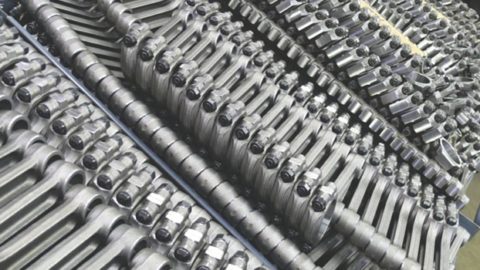
The manufacture of the rod is an extremely complex and precise process, as each micrometer differs from its design can greatly affect engine life and efficiency. For that reason, the improvement plan must be implemented closely to ensure that both the output and the quality meet the customer’s requirements.
To solve the above problem, Albon’s innovation team has created a value flow diagram to capture all problems in the current production line. Immediately thereafter, the Takt time (the maximum time the product needs to be produced to meet the needs of the customer) was determined to assess the feasibility of the improvement plan. In this example, Albon engineers have 3 months’ time to both refine the process and carry out production.
Accordingly, Albon determined that a new multi-spindle lathe would be needed to help speed up machining while maintaining stable bolt and torque configurations throughout the engine life. In addition, a vertical machining center will be replaced with a complete machining robot. Three Months of Outtime and Quality data are analyzed and OEE calculated for each process. This information is used to create an efficient production cycle time chart (production cycle time / OEE). Takt time charts help to identify priorities for improvement.
On the other hand, the improvement team also simulated the future production status diagram and the action plan. Implementing 5S to stabilize production on 2 of the priority processes has helped to achieve the OEE goal (This is to reduce unplanned downtime and increase the machining center’s operating efficiency in line with designed capacity).
For the waste matter, the machining of the joints (consisting of the large end attached to the crankshaft and the small end attached to a piston) will be done entirely by an automated robot. This has helped Albon significantly reduce the waste / finished product ratio.
Albon needed a standard process to replicate innovation to other lines, so the Lean Albon Production System (ALPS) was developed. A 10-step ALPS performance evaluation checklist is generated and improved evidence is recorded. OEE objectives have been set for each production process and cycle time. Takt time charts are constantly updated as improvements are made. Some of the improvements involve eliminating 7 waste and making amendments to Business Standards.
Thanks to the efforts of the improvement team, Albon PLC has achieved its goal of a production line with an output of 1790 bars / day. The resulting change in value flow helped the average OEE of 5 of the main on-line machines increase from a baseline of 73.8% (January to March) to 89.7% (average for July).
Productivity and Quality Office